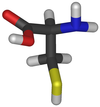Background & objectives: Streptococcal pyrogenic exotoxin B/streptococcal cysteine protease (SPE B/SCP) is considered to be one of the virulence factors of Streptococcus pyogenes (S. pyogenes) which causes serious diseases such as severe invasive infections and Streptococcal toxic shock syndrome (STSS). There are no reports on the histamine releasing activity of SPE B/SCP from mast cells, although several biological activities have been studied. It is not clear whether SPE B/SCP have the superantigenic activity. We studied whether SPE B/SCP plays as a pathogenic factor in Streptococcal infections and STSS through a histamine releasing activity.
Methods: Human mast cells and basophils were generated from CD34 positive cells isolated from cord blood and cultured in the presence of rIL-6, stem cell factor and/or rIL-3. The capacity of increasing capillary permeability of recombinant SPE B/SCP (rSPE B/SCP) was studied by using the skin of guinea pigs. Mitogenic activity to human T-cells of rSPE B/SCP was studied by incorporation of ^sup 3^H-thymidine. The levels of histamine in the plasma of patients with STSS and controls were measured by ELISA kit.
Results: rSPE B/SCP induced increased capillary permeability in the skin of guinea pigs, but both SPE A and SPE C did not exhibit such activity. Histamine was released from cultured human mast cells stimulated with rSPE B/SCP. The rSPE B/SCP did not exhibit mitogenic activity to human T-cells. Three of the 7 patients with STSS showed higher levels of plasma histamine than those of normal subjects.
Interpretation & conclusion: The results suggested that increased capillary permeability and histamine release from mast cells induced by rSPE B/SCP might be involved in STSS and/or Streptococcal infection of skin and mucous membrane.
Key words Capillary permeability factor - recombinant SPE B/SCP - streptococcal infection
Streptococcus pyogenes (S. pyogenes) causes serious diseases in human, such as severe invasive infections and streptococcal toxic shock syndrome (STSS). Streptococcal pyrogenic exotoxin B/ streptococcal cysteine protease (SPE B/SCP) produced by S. pyogenes is considered to be one of the virulence factors of this bacterium.
Histamine is one of the chemical mediators that participates in the inflammatory process through its capacity of increasing vascular permeability and /or anaphylactic shock. We hypothesized that SPE B/SCP may play as a pathogenic factor in streptococcal infection and STSS through a histamine releasing activity. We constructed the expression vector pSK-SCP containing the speb gene which expressed protease activity. The recombinant SPE B/SCP (rSPE B/SCP) was secreted into the culture supernatant of the transformant and retained its SCP activity1.
We studied whether SPE B/SCP plays as a pathogenic factor in STSS and streptococcal infections through a histamine releasing activity.
Material & Methods
Purified native SPE B/SCP (nSPE B/SCP) and rSPE B/SCP were obtained according to the methods described previously1. CD34 positive mononuclear cells were isolated from cord blood by Ficoll-Paque and by MACS (magnetic cell sorting) beads. Mast cells were generated from CD34 positive cells by culturing in the presence of rIL-6 and stem cell factor2. Basophils were also generated in the presence of rlL-3. Cultured mast cells and basophils (1-5 × 10^sup 5-6^ cells/ml in Tyrode's solution) were stimulated with 5 to 20 µg/ml of rSPE B/ SCP, SPE A, SPE C or 1 µg/ml of lipopolysaccharide (LPS).
Histamine was measured in duplicate by using EEISA kit (lmnuinotech, France).
After depilation of the back skin of guinea pigs (Hartley strain weighing about 250-300 g), nSPE B/SCP, rSPE B/SCP, SPE A, SPE C (1- 20 µg/ml), histamine and bradykinin, respectively were injected at doses of 0.1 ml intracutaneously. One per cent Evans blue dye solution was injected intravenously with 0.5 ml at intervals from 5 min to 2 h. The animals were sacrificed 20 min after injection. Afterwards, the skin was dissected from the abdominal wall and reflected; the spots of the blue lesions were observed3.
Human peripheral blood mononuclear eel Is (5 × 10^sup 5^/ well) were cultured in 0.2 ml vol in 96-weIl microtitre plates and stimulated in triplicate with graded doses of rSPE B/SCP and TSST-I for varying periods. Cultures were pulsed with 1 µCi ^sup 3^H-thymidine for the final 16 h of the stimulation period, and incorporation of ^sup 3^H-thymidine in the harvested cells was measured with a liquid scintilation counter. The data were presented as an average of triplicates of counts per minute (cpm)4.
Results & Discussion
Increased capillary permeability in the skin of guinea pigs: As shown in Fig. 1, the rSPE B/SCP, which was activated with 1 mAfdithiothreitol (DTT) remarkably increased capillary permeability in the skin of guinea pigs. Increased capillary permeability appeared at 3-5 min after intracutaneous injection of rSPE B/SCP and activated rSPE B/SCP. After 1-2 h, severe redness or petechial haemorrhages were observed on the injection sites. The skin tissues did not exhibit a remarkable change in the vascular walls itself, but rather edema in the extravascular space. The infiltration of polymorphonuclear leukocytes in the extravascular space was observed after 1 -2 h (data not shown). The capillary permeability increasing capacity of rSPE B/SCP remarkably decreased by heating at 60 °C for 30 min.
Inhibitory effect of E64 to increased capillary permeability of SPEB/SCP: Cysteine protease-specific inhibitor, E64 (5 µM) dissolved in dimethyl sulphoxide (DMSO) was added into the solution of nSPE B/SCP and rSPE B/SCP that activated with 1 mMDTT. The increased capillary permeability activity of both nSPE B/SCP and rSPE B/SCP were inhibited by E64. It is suggested that the capacity of increased capillary permeability may correlate with cysteine protease activity.
Capillary permeability increasing effect of SPE A, SPE C, recombinant Zymogen (rZym) and rSPE B/ SCP: Increased capillary permeability of SPE A, SPE C, rZym and rSPE B/SCP, respectively were tested. As shown in Fig. 2, although increased capillary permeability was also induced by rZym activated with 1 mA/DTT, the capacity was much weaker than that of rSPE B/ SCP. Increased capillary permeability effect of rZym may be induced by rSPE B/SCP cleaved from rZym autocatalytically. Capillary permeability activities of SPEs A and C, having superantigenic property, were similar to that obtained by injecting 0.9 per cent saline solution as control. Therefore, both SPE A and SPE C seemed like not having the activity of increased capillary permeability.
Inhibitory effect of anti-histamine drug to increased capillary permeability by SPE B/SCP: Diphenhydramine hydrochloride (DH) at concentration of 1 mg/kg was injected into the abdominal cavity of guinea pig. Twenty-five minutes later, each sample was injected intracutaneously, and Evans blue dye was injected intravenously. Increased capillary permeability of nSPE B/SCP and rSPE B/SCP was inhibited remarkably by DH as well as that of histamine and bradykinin. Although the increased capillary permeability of rSPE B/SCP was not inhibited after the DH-treatment, the degree of reaction was much weaker than that of the non DH-treatment. Because of the cysteine protease activity of rSPE B/SCP was much stronger than that of nSPE B/SCP, increased capillary permeability of rSPE B/SCP was not inhibited completely by DH, or other mediator(s) might be participated in increased capillary permeability with histamine.
Mitogenic activity ofrSPEB/SCP: Proliferation activity to human T-cells of rSPE B/SCP was studied (Fig. 3). The results showed that rSPE B/SCP and DTT- activated rSPE B/SCP, respectively, did not exhibit mitogenic activity, although toxic shock syndrome toxin-1 (TSST-1) indicated a potent human T-cell mitogen activity. The rSPE B/SCP did not exhibit direct cytotoxic actions to human T-cells.
Histamine release from cultured human mast cells (HMC) stimulated with rSPE B/SCP: rSPE B/SCP induced histamine release from HMC in a dose dependent manner. SPE A and LPS did not induce histamine release from HMC. Degranulation from HMC stumulated with rSPE B/SCP was observed morphologically by May-Grunewald Giemsa stain (data not shown).
Histamine levels in the plasma of patients with STSS and normal subjects: Histamine levels in 3 of the 7 patients, were 294,113 and 33 pg/ml, respectively. The histamine levels of other patients with STSS were in the normal range (20 pg/ml). Two patients died within 4 to 7 days of disease onset (data not shown).
In conclusion, rSPE B/SCP induced increased capillary permeability in the skin of guinea pigs, but both SPE A and SPE C did not exhibit such activity. Histamine was released from cultured human mast cell stimulated with rSPE B/SCP. The rSPE B/SCP did not exhibit superantigenic activity to human T-cells. Three of the 7 patients with STSS showed higher levels of plasma histamine compared to the normal subjects.
These results suggested that increased capillary permeability and histamine release from mast cells induced by rSPE B/SCP might be involved in STSS and/ or streptococcal infection of skin and mucous membrane.
Acknowledgment
This work was supported by a grant from Research on Emerging and Reemerging Infection Diseases, Health Science Research Grant, the Ministry of Health, Labor, and Welfare of Japan.
References
1. Watanabe Y, Todome Y, Ohkuni H, Sakurada S, Ishikawa T, Yutsudo T, et al. Cysteine protease activity and histamine release from the human mast cell line HMC-I stimulated by recombinant styreptococcal pyrogenic exotoxin B/streptococcal cysteine protease. Infect Immun 2002; 70 : 3944-7.
2. Saito H, Ebisawa M, Tachimoto H, Shichijo M, Fukagawa K, Matsumoto K, et al. Selective growth of human mast cells induced by steel factor, IL-6, and prostaglandin E2 from cord mononuclearceil. J Immunol 1996; 157:342-50.
3. Ohkuni H, Kimura Y. Increased capillary permeability in guinea pigs and rats by peptidoglycan fraction extracted from group A streptococcal cell walls. Exp Cell Biol 1976; 44: 83-94.
4. Uchiyama T, Kamagata Y, Yan X.-J, Kawachi A, Fujikawa H, Igarashi H, et al. Relative strength of the mitogenic and interleukin-2-production-inducing activities of staphylococcus exotoxins presumed to be causative exotoxins of toxic shock sundrome: toxic shock sundrome toxin-1 and enterotoxin A, B and C to murine and human T cells. J Immunol 1989; 75: 239-44.
Hisashi Ohkuni, Yuko Todome*, Yukino Watanabe*, Toshio Ishikawa* Hidemi Takahashi*, Yutaka Kannari, Hidehito Kato**, Takehiko Uchiyama**, Hirohisa Saito[dagger], Vincent A. Fischetti[double dagger] & John B. Zabriskie[double dagger]
Clinical Lab, Medea Japan Co. Ltd, Saitama, * Nippon Medical School, ** Tokyo Women's Medical University, [dagger] National Children's Medical Research Center, Tokyo, Japan & [double dagger]Rockefeller University, New York, USA
Received August 7, 2003
Reprint requests: Dr H. Ohkuni, Director of Clinical Lab, Medea Japan Co. Ltd, 3-673, Tenjin, Konosu, Saitama, 365-8511 Japan
e-mail: h-okuni@nms.ac.jp
Copyright Indian Council of Medical Research May 2004
Provided by ProQuest Information and Learning Company. All rights Reserved



